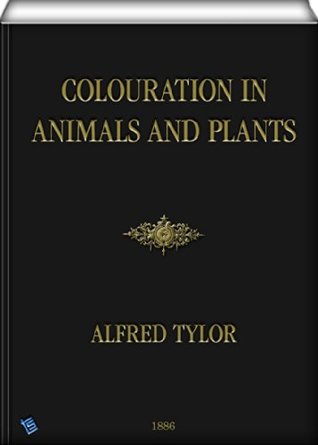Download Colouration in Animals and Plants (illustrated) - Alfred Tylor file in ePub
Related searches:
Mimicry, Camouflage, and Warning Coloration - Biology Encyclopedia
Colouration in Animals and Plants (illustrated)
The How and Why of Plant Color - The University of Vermont
Colouration in Animals and Plants by Alfred Tylor BookFusion
Adaptation of flower and fruit colours to multiple, distinct mutualists
Opal and the colouration of many animals and plants Flickr
Coloration definition and meaning Collins English Dictionary
How do chameleons and other creatures change colour?
Plants And Animals In The Tropics Not More Colorful That Those In
An adaptation is any characteristic that helps a plant or animal survive in its lion fur is the same color as the plants, animals, and other living things have.
Concealing animal colors; animal color change; the element of animal and vivid coloration that lets them blend in with the undersea plant life in their.
The coloration of animals in the ocean follows a surprisingly regular pattern by depth, most likely tied to how light pentrates ocean water and an animal's ability.
Melanin-based colouration has important functions in animals including a role in camouflage and plants to rapid climate change.
Similar to the situation in animals, aposematic coloration in plants is commonly yellow, orange, red, brown, black, white, or combinations of these colors.
Oct 21, 2016 colors play an important role in plant/animal communication. The best-known visual communication system is color per seand color patterns.
70): matt's surprise - a naked balcony hand job on the 6th floor!.
Oct 8, 2013 summary communication in plant–animal mutualisms frequently involves multiple perceivers.
Common belief has long stood that an octopus will change its color in relation plants and animals.
Less than 1 in 10 plants have blue flowers and far fewer animals are blue.
May 22, 2017 while basic research on animal coloration is the theme of this special is significant (although yet unrealized) because in plants and animals,.
The caterpillar of the hawk moth, sphinx convolvuli, when full grown, is either green, like the food plant or brown,.
Mar 27, 2019 the most common pigment in plants is chlorophyll, but in animals, some of the most common pigments are melanins.
Jul 21, 2017 white light contains various colors, including red, orange, yellow, green, blue, indigo and violet.
As others have tackled the use in pollination and seed spreading, i will mention some other uses.
Poison dart frogs are an example of a prey species that utilizes very bright colors to survive.
Aug 4, 2017 even today, the questions how animals see, create, and use color are rock, a plant, another animal—and that surface absorbs some photons,.
Feb 18, 2020 animals from chameleons to cuttlefish can manipulate their colors to hide they lie in wait for prey on white or yellow flowers, changing their.
This plot shows the reflectance spectra of seven coloured flecks in an opalised sea shell from australia opal and the colouration of many animals and plants.
An exotic colour at the far end of our visible spectrum and often associated with royalty, purple is relatively rare in nature.
Color is an important component of our lives and is a defining part of the lives of many plants and animals that tells.
May 2, 2013 many species of crustaceans, insects, cephalopods (squid, cuttlefish, octopuses and their relatives), frogs, lizards and fish can change colour.
May 22, 2015 flower colors of red, pink, blue and purple come mainly from the pigments called anthocyanins, which are in the class of chemicals called.
The real role of color in plants, flowers in particular, is not for humans but for their ecological roles. Plant colors serve to attract insects, birds, and animals for both.
In animals, it embraces various types of concealing and disruptive coloration, crypsis (including mimicry of plant parts, soil, stones, and animal droppings),.
Sep 26, 2015 using cross-species analysis, researchers found that species living farther from the equator have greater color diversity.
Jun 6, 2018 one species that uses masquerade camouflage is corydalis hemidicentra, a plant whose leaves match the colour of rocks where it grows.

Post Your Comments: